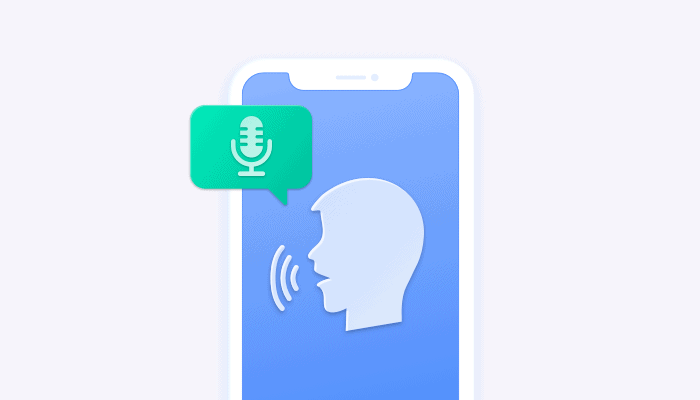
In recent decades the rise of emailing, sms texting, and more recently in-app chat and video calling has, to some extent, relegated voice calling to the sidelines. To some people, getting on the phone and speaking with someone directly seems almost antiquated. However, there are still good reasons why we shouldn’t underestimate the effectiveness of the spoken word. There is plenty of science to demonstrate that the human voice provides a powerful way to connect people, more effectively some researchers say than the written word or by visual cues. There is also strong business rationales why you should consider integrating voice calling into any application requiring communication functionality to improve your business success. The Covid-19 pandemic witnessed a boom in the reliance on phone calling. This is unsurprising as the stay-at-home orders and need for social distancing compels us to find other ways to stay connected. But clearly, hearing the voice of loved ones or even work colleagues was more emotionally satisfying during these troubled times than just simply texting our way through the pandemic. Regardless of the recent upswing in demand for auditory communication due to the global health crisis, in-app voice calling remains an effective tool that holds several advantages over other types of communication.
The Power of Audio Communications
The human voice is a powerful instrument. With just a few spoken words we can gage another person’s level of interest and their mood. In fact, some researchers claim it’s easier to connect emotionally with someone when we are not distracted by looking at their face. In one research experiment, participants were more accurate assessing the mood of their friends when they heard them talking without actually seeing them, leading the researcher to conclude that “voice-only communication enhances empathic accuracy.” Similarly, Amit Kumar at the University of Austin, Texas conducted an experiment where he asked his research group to connect with old friends via a range of media. He found that social interactions that included voice created the strongest bonds. Furthermore, when they added video communications there were no added benefits. “The visual cues didn’t seem to add much beyond what voice-based media added over text-based media, with regards to facilitating these feelings of connection.” There is ambiguity when attempting to read someone’s face on a video call and recent studies suggest that facial expressions might not be a reliable indicator of emotion. It would seem we can learn just as much, if not more, by the tone of voice rather than by facial expressions.
As more and more of us begin to work remotely, verbal communication provides a human touch that holds a real advantage over other forms of connecting. In the world of work and business auditory expression can be a powerful tool for comforting an unwell patient during a remote consultation, explaining a complex problem to an online student, assuaging a disgruntled customer about to post a negative review, or persuading a potential buyer to part with their money. With our voice we can communicate care, interest, and urgency in ways that help us to forge connections and build trust. Audio conversations carry the potential of creating stronger relationships in both social and business settings.
Benefits of in-app audio calls
Adding audio calling functionality to your mobile or browser based application provides countless benefits, and there are numerous use cases, whether you are trying to connect online community members, a remote workforce, doctors with patients, or businesses with their customer base. Let’s take a look at some of the key advantages of this functionality and how it can benefit almost any business.
- Clear & Prompt Communication
Audio communication minimizes the risk of being misunderstood. If you need to follow a series of complicated steps, a simple call allows someone to talk you through the process.
- Cost-Effective
In-app voice calls significantly reduce the price of domestic and international calls. Unlike traditional phone call solutions, voice chat apps don’t require any expensive equipment or maintenance.
- Convenient
Audio calls provide a super quick and easy way to connect. Contacts are easily found by simply scrolling down your in-app contact list. With a simple click of a button or a touch on the screen you initiate a connection. High-speed internet connectivity means people can instantly interact whether they are on local or international calls. Furthermore, calls can take place over a variety of devices–smartphones, tablets, laptops and desktops–to increase business efficiency.
- Audio Conferencing
Unlike traditional calls, in-app calls enable audio conferencing solutions where, depending on whether you use a media server or not, 4-12 users can engage in a conference together. This is the perfect set-up for business meetings, medical discussions, financial consultations, HR interviews when more than two people need to be on the call.
- Additional Call Features
Many voice call APIs enable a host of enhancements on standard phone functions to enrich your calling experience. Modern voice chat programs usually include services like instant messaging, ID information, contact lists, the ability to set up group calls, or add another person during a call. Due to its flexibility, voice chat services can be customized to meet the unique needs of your business.
- High-quality
A mature voice chat app has eminent quality benefits compared with standard phone services. Communication is clear and smooth, with no interference, latency, or drop-outs issues.
- Call Recording Service
Voice chat apps allow you to record and save calls, ensuring that critical messages aren’t lost. This can be especially helpful for audio conferencing when the content of the meeting needs to be recorded for auditing purposes, or so that it can be shared with other departments or personnel. Modern voice chat apps also allow you to review call logs which document duration and times of calls.
- Secure
In-app audio calling offers much more protection than traditional phone services. Advanced voice chat solutions have encryption protocols, ensuring data is securely protected.
How QuickBlox can help
Quickblox’s ready-to-use Rest API and voice calling SDKs can be easily integrated into your existing platform to provide engaging real-time communication.
- Our voice calling functionality is built with the latest WebRTC technology, which is secure by design. This built-in security guarantees the privacy of your calls.
- Our software supports both one-to-one, small groups, or large audio conferencing options, and includes a host of features including the ability to record phone calls, create contact lists, and save and retrieve call logs.
- QuickBlox’s voice chats APIs and SDKs can be customized according to business communication needs. There are options to add video calls and video conferencing to create a truly immersive user experience, or integrate push notification so that users can be alerted of incoming calls, even if their app is offline.
- Our tools are easy and quick to implement on cross-platforms. This means our software is fully scalable and you spend less time developing your app to get it to market.
Conclusion
Businesses concerned about efficient and cost-effective communication solutions should consider the value of in-app voice calling and audio conferencing. Despite the growing popularity of instant messaging and video calls, the power of the spoken word lives on.
If you’re ready to discover more about the benefits of in-app voice calls for your business, don’t miss our powerful voice APIs and SDKs.
Contact us to discuss the details.






